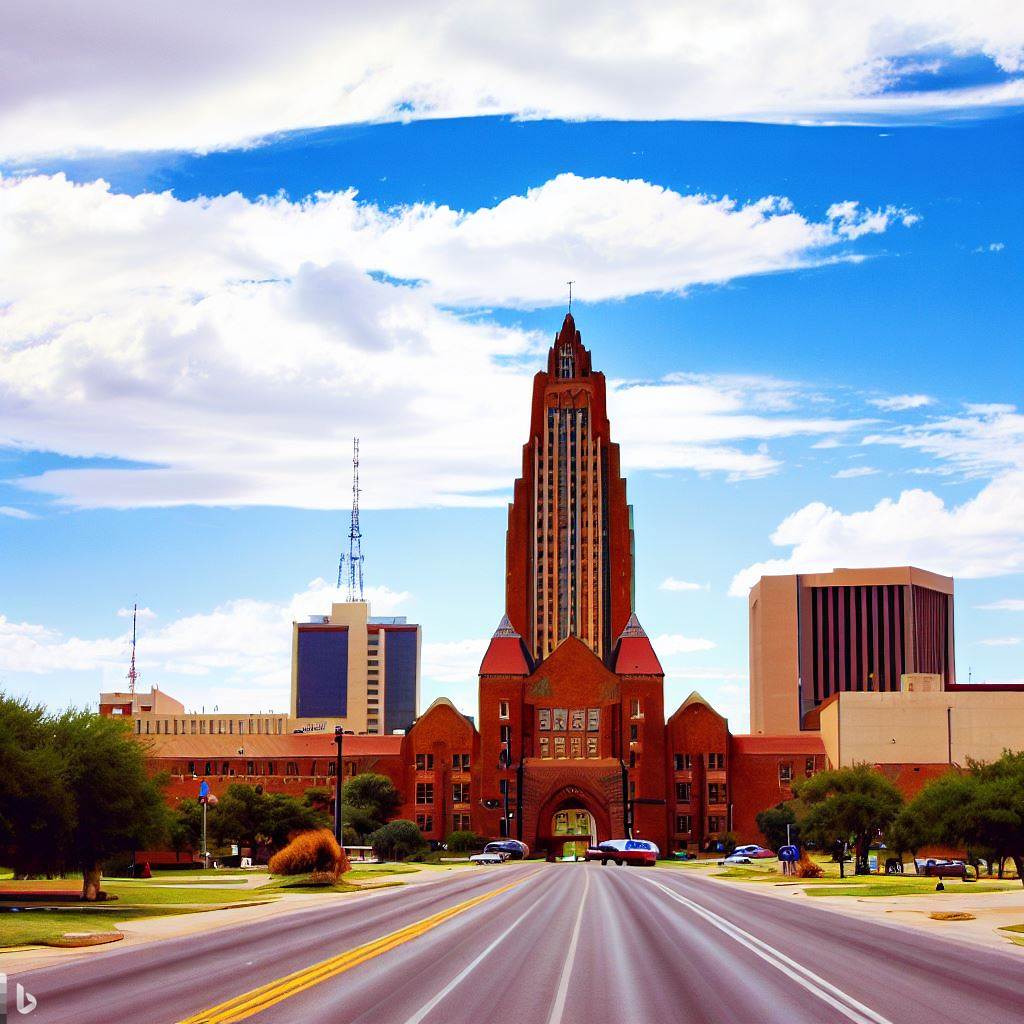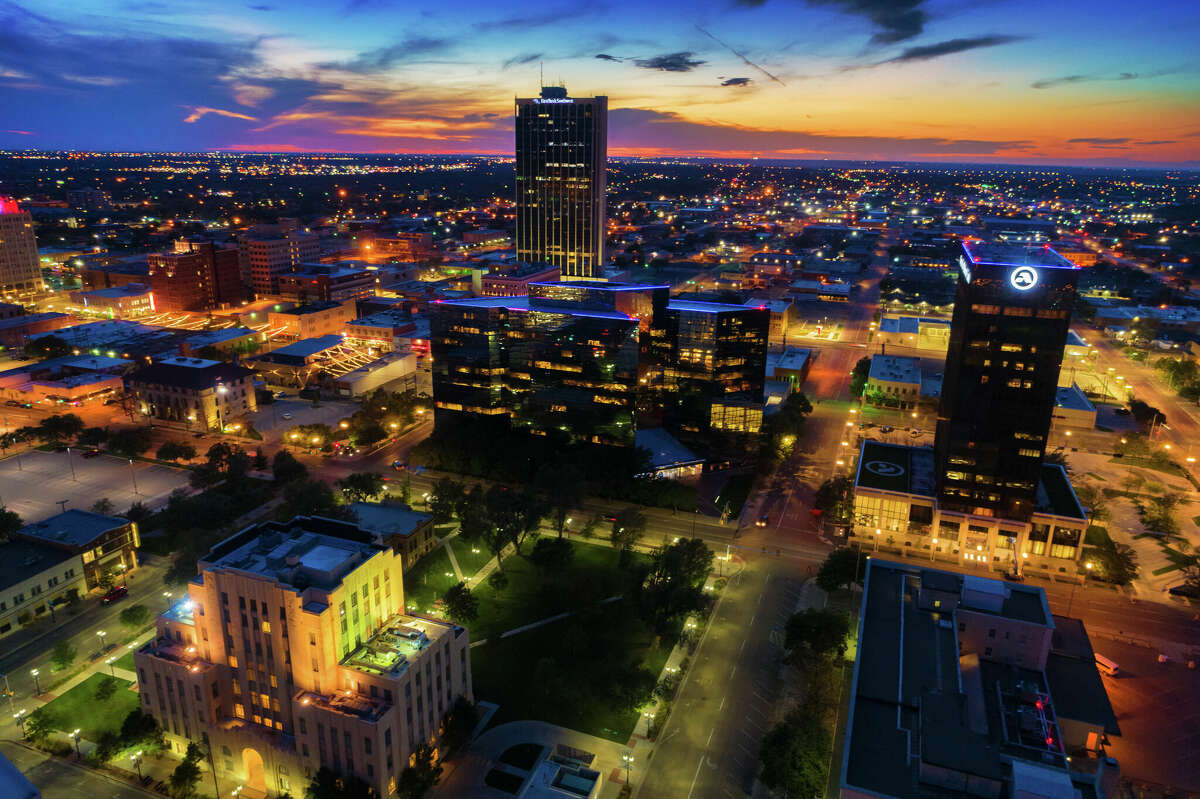
Amarillo: Where the Panhandle Plains Meet American Grit
AMARILLO, Texas – From the air, the Texas Panhandle unfolds in a vast, flat tapestry of tawny plains, punctuated by the straight lines of highways and the occasional glint of a feedlot. And then, there it is: Amarillo, a city that rises like an unexpected oasis, a vibrant crossroads where the legendary Route 66 meets Interstate 40, and the American spirit of ingenuity and resilience finds a home under an impossibly big sky.
Amarillo isn’t the Texas of sprawling metropolises like Dallas or Houston, nor the historic charm of San Antonio. It’s something else entirely – a rugged, unpretentious hub that proudly embraces its identity as the "Beef Capital of the World" and the gateway to one of the nation’s most breathtaking natural wonders. It’s a city of contrasts, where multi-million-dollar cattle operations exist alongside quirky art installations and a steakhouse that challenges the most ambitious appetites.

"People often think of Texas as just desert or tumbleweeds, or the big cities," says Dr. Eleanor Vance, a local historian and author. "But Amarillo, it’s the heart of the High Plains. It’s where the West truly begins for many, a place shaped by the railroad, by cattle, and by the sheer will of the people who settled here."
A History Forged in Steel and Dust
Amarillo’s story is inextricably linked to the iron horse. Founded in 1887 as a railroad tent city, it quickly became a vital shipping point for the vast cattle ranches of the Panhandle. Its name, Spanish for "yellow," is said to derive from the yellow wildflowers that once blanketed the landscape or the yellow soil of the nearby Amarillo Creek. By the turn of the century, it was a booming "Cowtown," attracting cowboys, entrepreneurs, and dreamers looking to stake their claim in the new frontier.
The discovery of natural gas and, crucially, helium in the 1920s solidified Amarillo’s economic future. The city became a global center for helium production, earning it the moniker "Helium Capital of the World." A towering, stainless-steel monument to helium stands proudly downtown, a testament to this unique industrial heritage.
But perhaps no single factor etched Amarillo into the American consciousness quite like Route 66. As the legendary "Mother Road" stretched its asphalt ribbons across the country, Amarillo became an essential stop for travelers, dreamers, and those seeking a new life out West. Motels, diners, and service stations sprung up along its path, shaping much of the city’s nostalgic charm that persists today.
The Economic Engine: Beef, Energy, and Logistics
Today, Amarillo’s economy remains deeply rooted in its historical strengths, albeit on a much grander scale. The cattle industry is colossal. Drive around the outskirts, and you’ll encounter the distinctive aroma of vast feedlots, where millions of cattle are raised annually. Amarillo boasts one of the largest concentrations of beef processing plants in the nation, making it a critical link in the global food supply chain.
"We’re not just raising cattle here; we’re innovating," explains Sarah Jenkins, CEO of the Amarillo Chamber of Commerce. "From genetics to sustainable feeding practices, this region is at the forefront of the beef industry. It’s a testament to our agricultural heritage and our commitment to feeding the world."

Beyond beef, energy continues to be a driving force. While oil and gas remain significant, Amarillo has also embraced renewable energy. The Panhandle’s incessant winds make it an ideal location for wind farms, and towering turbines now dot the horizon, silently generating clean power. Its strategic location at the intersection of I-40 and I-27 also positions Amarillo as a vital logistics and transportation hub, with goods flowing in and out across the country.
Healthcare and education are also growing sectors, with facilities like the Amarillo Medical Center and educational institutions like West Texas A&M University (just south in Canyon) contributing to a diversified economic base.
Quirks, Culture, and the Great Outdoors
Amarillo’s spirit is perhaps best captured by its most famous, and famously quirky, attractions.
No visit is complete without a pilgrimage to Cadillac Ranch. Nestled in a cow pasture just west of the city, ten vintage Cadillacs are buried nose-down in the earth, their tailfins pointing skyward. Since 1974, this public art installation by the art group Ant Farm has invited visitors to leave their mark, quite literally, by spray-painting messages and designs on the cars. It’s a constantly evolving canvas of vibrant, chaotic expression.
"It’s a bizarre, beautiful, and utterly Texan landmark," says Maria Sanchez, a tourist from California, her hands covered in neon green paint. "It’s interactive art, and it’s so freeing to just spray whatever you want. It’s not pretentious; it’s just fun."
Equally iconic is The Big Texan Steak Ranch. Since 1960, this sprawling, kitschy restaurant has been challenging brave souls to consume a 72-ounce steak dinner (with all the trimmings) in under an hour. If you succeed, it’s free. Thousands have tried, many have failed, but the spectacle alone draws crowds. The restaurant embodies the larger-than-life Texas spirit, complete with a gift shop, arcade, and live music.
But Amarillo isn’t just about man-made curiosities. Just a short drive south lies the majestic Palo Duro Canyon State Park, the second-largest canyon in the United States. Often called the "Grand Canyon of Texas," its dramatic geological formations, vibrant red rock, and sprawling vistas offer a stunning contrast to the flat plains above. Hikers, bikers, and equestrians flock to its trails, and during the summer, the outdoor musical "TEXAS" tells the story of the Panhandle’s early settlers against the backdrop of the canyon walls.
"Palo Duro is our secret weapon," says lifelong resident Mark Peterson, as he gazes out over the canyon rim. "You drive through the flatlands, and then suddenly, the earth just opens up. It’s breathtaking, and it reminds you of the wild, untamed beauty of this region."
Other notable attractions include the Jack Sisemore Traveland RV Museum, home to a fascinating collection of vintage RVs and motorcycles; the Kwahadi Museum of the American Indian, preserving the art and culture of Native American tribes; and the Amarillo Botanical Gardens, an unexpected burst of horticulture in the high plains.
The Spirit of the High Plains
The people of Amarillo are as resilient and unpretentious as the landscape itself. There’s a strong sense of community, a work ethic forged by the demands of agriculture and industry, and a friendly, welcoming demeanor. It’s a place where neighbors still help neighbors, and community events are well-attended.
"We might not have the glitz of other cities, but we have heart," says Brenda Williams, a retired teacher who has lived in Amarillo for over 50 years. "People here are genuine. They value hard work, family, and community. We’ve weathered droughts, blizzards, and economic shifts, and we always come out stronger."
Amarillo also boasts a growing arts scene, with the Amarillo Symphony, Amarillo Opera, and a vibrant local theater community. Sports fans rally behind local teams, including the Amarillo Sod Poodles, a Minor League Baseball team, and the West Texas A&M Buffaloes.
Challenges and the Road Ahead
Like any city, Amarillo faces its share of challenges. The harsh Panhandle climate brings extreme heat in summer, biting cold in winter, and the occasional dust storm that reminds residents of the arid conditions. Water conservation is a constant concern.
Economically, while its core industries are robust, the city is actively working to diversify further, attract new businesses, and retain its young talent. Initiatives aimed at urban revitalization and enhancing quality of life are underway, ensuring Amarillo remains an attractive place to live and work.
"We’re always looking forward," says Jenkins from the Chamber of Commerce. "We’re building on our strengths, but we’re also embracing innovation. We want Amarillo to be a place where businesses thrive, families grow, and people can enjoy a quality of life that’s unique to the Panhandle."
Conclusion: More Than a Stopover
Amarillo is more than just a convenient stop along a cross-country drive. It’s a city with a rich history, a robust economy, and a quirky, undeniable charm. It embodies the enduring spirit of the American West, a place where tradition meets modernity, and where the vastness of the landscape is matched only by the warmth of its people.
Whether you’re marveling at spray-painted Cadillacs, attempting an epic steak challenge, or gazing into the geological grandeur of Palo Duro Canyon, Amarillo leaves an indelible mark. It’s a testament to the fact that some of the most compelling stories, and most genuine experiences, are found far from the beaten path, right where the Panhandle plains meet American grit.


